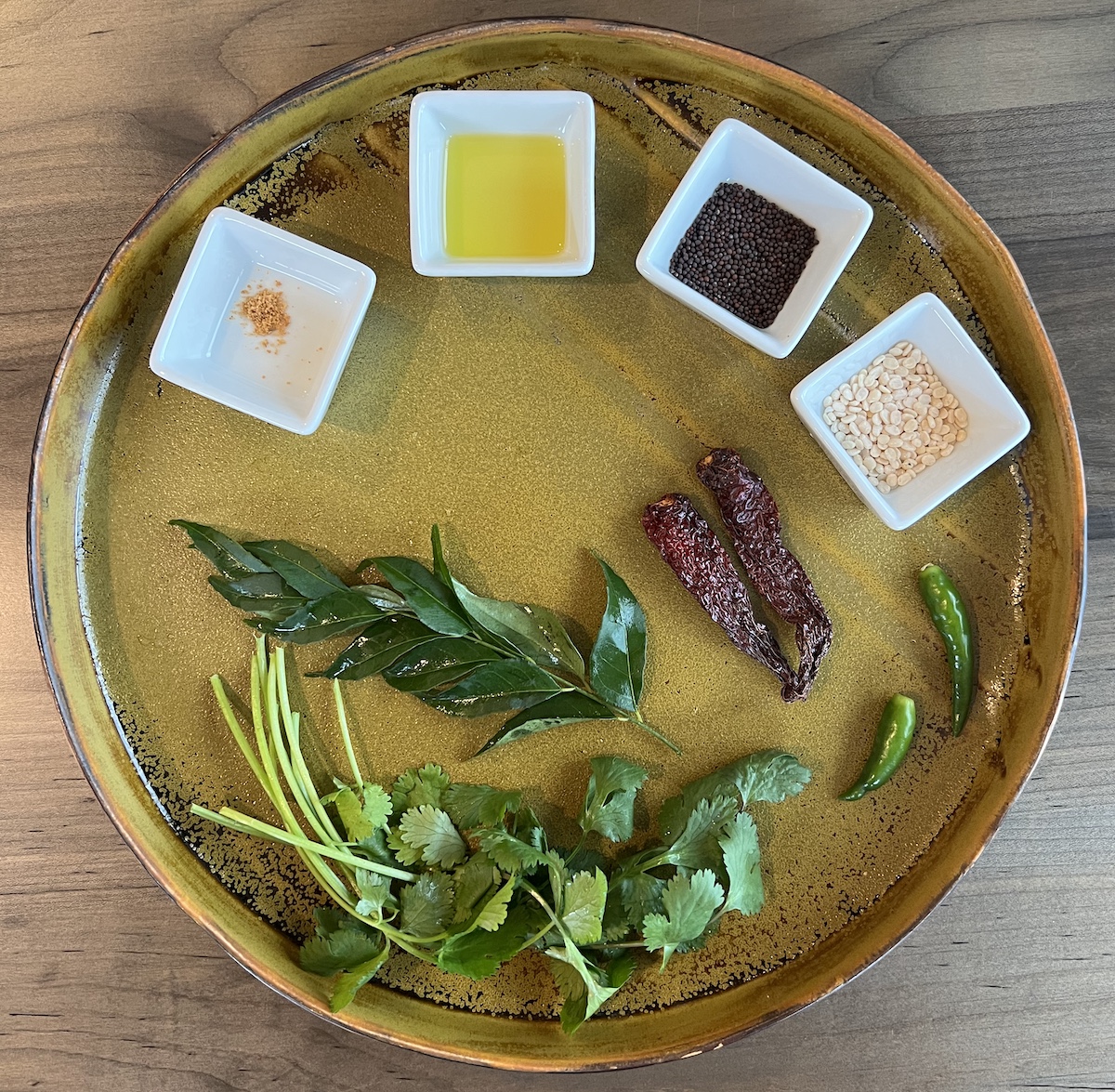What is Vaggarnae?
Vaggarnae is a seasoning technique that is a key component of Kannadiga cuisine. Basically, fresh spices and herbs are added to either hot oil or ghee to extract their flavor and perfume the hot oil, and then the mixture is poured over the rest of the dish. It is the beautiful finishing touch to many Kannadiga dishes, with the aroma pulling the diner in to dig in. Vaggarnae is sometimes also used as the base in which a dish is cooked, building upon the aromas and texture it lends to the rest of the dish. Vaggarnae has its counterparts in other cuisines of India, such as chaunk in many northern states, vagaar in Gujarat, phodni in Maharashtra, or thaalipu in Tamil Nadu. They are all similar in purpose, but have variations in ingredients and preparation.While the basic concept of vaggarnae sounds simple enough, there is a certain technique involved in making it correctly. To get the best result, there is an order to add the spices to the hot oil, and cues to look for while making the vaggarnae. Some recipes will call for vaggarnae at the beginning of the recipe, while others ask for vaggarnae to be added at the end. All of this is important, and has a role in how your dish tastes at the end.
Ingredients
- Whole spices – Usually black mustard seeds or cumin seeds
- Lentils – Urad dal and optionally chana dal
- Heat – Dried red chillies, chopped green chillies, or coarsely ground black pepper. The Byadgi variety of dried red chillies is used for its rich red color and medium heat.
- Herbs – Curry leaves and chopped cilantro are the most common ones here.
- Aromatics – Hing (asafoetida) is the most common one in this category though occasionally fresh methi (fenugreek) seeds are also used.
- Fat – Vegetable oil or ghee. Some recipes are best with ghee for its nutty flavor. However ghee is not used for a cold dish like Raita since it will solidify as it cools.
Equipment
- Vaggarnae is traditionally made in a small kadai, or a small skillet, when it is used as a finishing touch. When it is used as the starter for a dish, it is just made in the pan that the whole dish will be cooked in. Regardless, for reasons that will become apparent in the next section, it is important to use a pan that has a lid.
Instructions
- Prep Ingredients – This is an important first step because making the vaggarnae goes by quickly, and having everything prepped and ready helps you focus on making it correctly. Chop your green chillies, chop the cilantro, and gather your curry leaves into a small stack and tear them in half with your fingers. Curry leaves are so much more fragrant when they are able to release their oils directly into the oil. If you are using dried red chillies, remove the stem and tear each one into half inch pieces. Adding them this way results in a deeper chilli flavor and color in the vaggarnae.
- Heat oil/ghee – Heat the oil or ghee listed in the recipe in the pan over medium low heat until it seems to ‘ripple’. If you are unsure, just heat it for 30 seconds, or at least until the ghee has melted.
- Add whole spices – Add the seeds listed in the recipe and cover the pan at this time. If you are using mustard seeds, they will start crackling, popping, and exploding as they heat up in a couple minutes. Without a lid on the pan, you will have a lot of escaping hot mustard seeds. If you are using cumin seeds, they don’t explode quite as spectacularly. Listen for the popping sounds to stop, turn the heat down and uncover the pan. Mustard and cumin seeds will burn very quickly after they are done popping, so it's important to turn the heat down before you proceed.
- Add lentils – At this time, add the lentils listed in the recipe. The lentils are used to add some crunch to the vaggarne. Wait till they turn a light golden brown. Be careful with this step; the lentils will go from golden brown to burnt very quickly.
- Add chillies – Next, add the chillies and give a quick stir. The chillies tend to burn quickly if you add them too soon. This is the reason they follow all the other ingredients that take some time to cook.
- Add herbs – Herbs are added next to the vaggarnae. If you are using curry leaves, they will splutter loudly when they hit the hot oil. Keep the lid ready in your other hand and cover the pan immediately after adding them. The curry leaves are done when they look crisp and blistered. If you are using cilantro, add them first before adding curry leaves.
- Add aromatics – Finally add the hing and watch it sizzle as it hits the hot oil and perfumes the air with its unique scent. At this point, your vaggarnae is ready. If your vaggarnae is the finishing touch of the dish, you can take it off the fire and pour it over the dish. Otherwise, continue on to the next step of the recipe.

